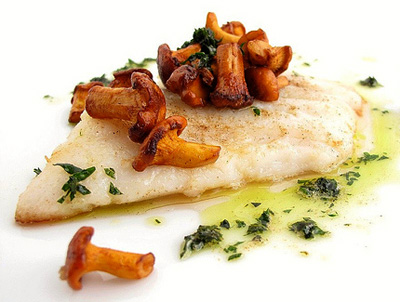 Oftentimes simplicity is the answer to most everything. Simple recipes with ingredients cooked in an unadulterated way yield very flavorful and inspiring results. For me that's always the case when cooking fish. Here I'm always reminded of the story of Julia Child's culinary revelation, when she is presented with a sole Meunière at a restaurant where she and Paul are dining after arriving in France. Most of us has read about this or has seen it in the movie Julie and Julia. Can it be so simple that a dish of sautéed fish with butter sauce inspired her to cook? Yes!
Oftentimes simplicity is the answer to most everything. Simple recipes with ingredients cooked in an unadulterated way yield very flavorful and inspiring results. For me that's always the case when cooking fish. Here I'm always reminded of the story of Julia Child's culinary revelation, when she is presented with a sole Meunière at a restaurant where she and Paul are dining after arriving in France. Most of us has read about this or has seen it in the movie Julie and Julia. Can it be so simple that a dish of sautéed fish with butter sauce inspired her to cook? Yes!
Here is my take on that sole dish but served with woodland mushrooms. On a recent Greenmarket trip I purchased a handful of beautiful chanterelles from Honey Hollow Farm, which forages its mushrooms from the wild in Middleburgh, N.Y. These mushrooms are one of the more pricey varieties, but their delicate flavor is worth it. That flavor is best maintained with simple cooking methods. That's why I sauté them in butter. Pair them with a seared mild fish such as sole along with a buttery sauce and it makes for a very nice meal. I bet Julia would have loved this dish for dinner any day of the week.

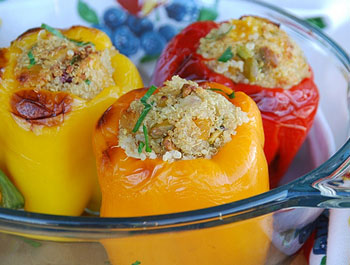 When I first wrote about quinoa two years ago, many of you empathized. You too had gone to a supermarket and asked someone where you could find the kwi-NO-ah. Not anymore. Quinoa (pronounced keen-WAH) is no longer just the baby of vegans; it has gone mainstream.
When I first wrote about quinoa two years ago, many of you empathized. You too had gone to a supermarket and asked someone where you could find the kwi-NO-ah. Not anymore. Quinoa (pronounced keen-WAH) is no longer just the baby of vegans; it has gone mainstream.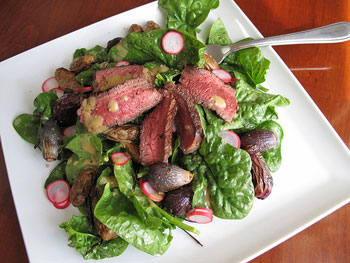 Spring brings many colorful bounties, but the best of the season comes in green. This time of year farmers' markets are brimming with tender, young vegetables. That's why my friend Caroline and I decided to take a trip to the Union Square Greenmarket this past week to see what dish we could create together.
Spring brings many colorful bounties, but the best of the season comes in green. This time of year farmers' markets are brimming with tender, young vegetables. That's why my friend Caroline and I decided to take a trip to the Union Square Greenmarket this past week to see what dish we could create together.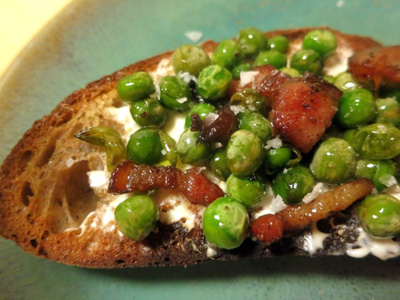 It was one of those days. I had run all over town doing errands when suddenly it was 5 o’clock and I remembered that the fridge was uncharacteristically empty. I got home, ran up the stairs, ran into the kitchen slightly panicked (the Mom must be fed) and saw that the
It was one of those days. I had run all over town doing errands when suddenly it was 5 o’clock and I remembered that the fridge was uncharacteristically empty. I got home, ran up the stairs, ran into the kitchen slightly panicked (the Mom must be fed) and saw that the 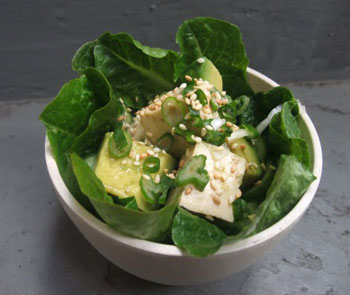 This is a zen salad. For one thing, like meditation, it requires slowing down. Normally salad is something you throw together at the last minute. Not this one. Patience, little grasshopper. You need to marinate the tofu overnight. It's also simple and straightforward. And it requires no oil. I know what you're thinking, what does THAT have to do with being zen? I'll tell you. This is an enlightened salad. The avocado is rich enough that you really don't need any additional oil.
This is a zen salad. For one thing, like meditation, it requires slowing down. Normally salad is something you throw together at the last minute. Not this one. Patience, little grasshopper. You need to marinate the tofu overnight. It's also simple and straightforward. And it requires no oil. I know what you're thinking, what does THAT have to do with being zen? I'll tell you. This is an enlightened salad. The avocado is rich enough that you really don't need any additional oil.